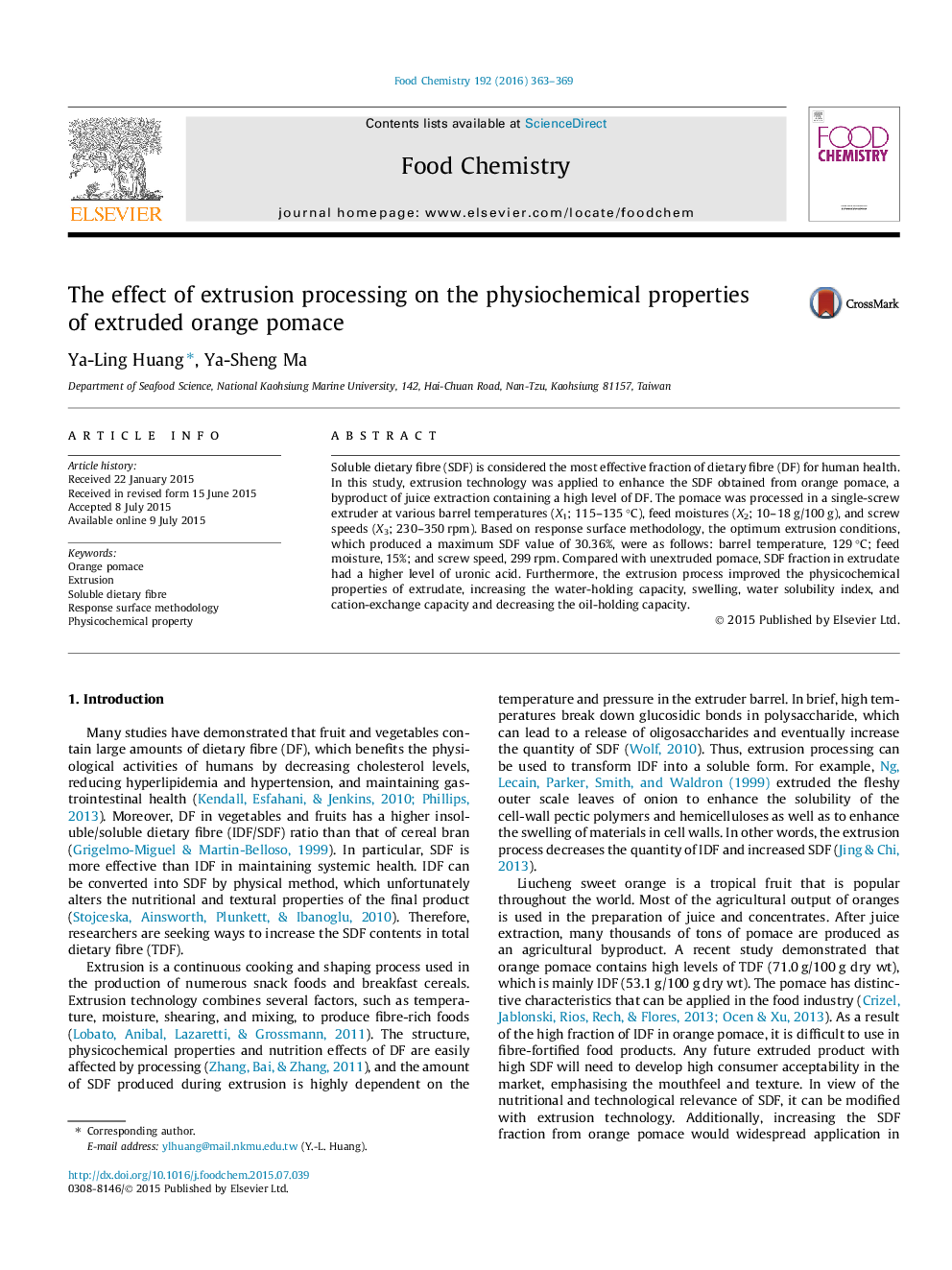| Article ID | Journal | Published Year | Pages | File Type |
|---|---|---|---|---|
| 7589887 | Food Chemistry | 2016 | 7 Pages |
Abstract
Soluble dietary fibre (SDF) is considered the most effective fraction of dietary fibre (DF) for human health. In this study, extrusion technology was applied to enhance the SDF obtained from orange pomace, a byproduct of juice extraction containing a high level of DF. The pomace was processed in a single-screw extruder at various barrel temperatures (X1; 115-135 °C), feed moistures (X2; 10-18 g/100 g), and screw speeds (X3; 230-350 rpm). Based on response surface methodology, the optimum extrusion conditions, which produced a maximum SDF value of 30.36%, were as follows: barrel temperature, 129 °C; feed moisture, 15%; and screw speed, 299 rpm. Compared with unextruded pomace, SDF fraction in extrudate had a higher level of uronic acid. Furthermore, the extrusion process improved the physicochemical properties of extrudate, increasing the water-holding capacity, swelling, water solubility index, and cation-exchange capacity and decreasing the oil-holding capacity.
Related Topics
Physical Sciences and Engineering
Chemistry
Analytical Chemistry
Authors
Ya-Ling Huang, Ya-Sheng Ma,
